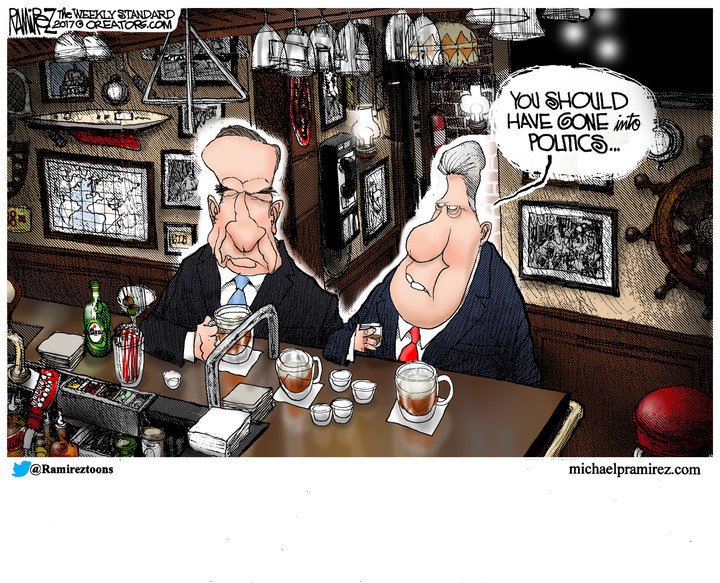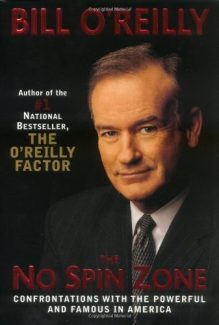Killing Patton: The Strange Death of WWII’s Most Audacious General
“If you have read ‘Killing Kennedy,’” author and TV commentator Bill O’Reilly reminds his readers, “you know that Martin Dugard and I are not conspiracy theorists. We write from a factual point of view, with no axes to grind.”
Thus, in the afterword of “Killing Patton: The Strange Death of World War II’s Most Audacious General” Mr. O’Reilly seeks to assure those who have just read this most recent volume in the co-authored (with Mr. Dugard) “killing” series that their findings are simply facts, not hype.
Careful shoe-leather detective work buttressed by research, access to decades-old correspondence and never-before publicized interrogations of sources from around the world have combined to give readers “Killing Patton.”
The famous tank commander had the proverbial bull’s-eye on his back from the day it was known that he did not trust our World War II “ally,” Marshal Josef Stalin. That was at a time when official U.S. government policy was to lure Stalin’s Soviet Union to join other allies (postwar) in forming and operating what became the United Nations.
Gen. Patton’s complaints included an order that American troops hold back on entering Berlin from the west until the Soviet troops could arrive in Germany from the east.
As the general saw it, we were rewarding Stalin for conquering Eastern and parts of Central Europe, and we failed to hold the Soviets to their promise to enable its occupied countries to implement democracy in selecting their legitimate postwar governments. Instead, they were coerced into living with a Soviet grip on that large part of the world for 50 years.
Gen. Patton did not live to see his dire predictions verified. In December, 1945, just a few months after war’s end, he was killed in an automobile crash that was viewed (by the authors, as well as by others) as no accident. (More on that below.)
Mr. O’Reilly and Mr. Dugard approach some of the most shocking conversations and revelations in a noninflammatory manner, as if simply dropped (a la “Oh, by the way”) into the midst of some routine report.
Example 1: Gen. William J. “Wild Bill” Donovan, head of the Office of Strategic Services (OSS), meets with professor Roman Smal-Stocki, an academic and former Ukrainian diplomat, who is on the verge of being expelled from Germany and sent back to Russian hands. Smal-Stocki informs Stephen Skubik, a Ukrainian-speaking special agent in the U.S. Counterintelligence Corps, that the NKVD will soon attempt to kill Gen. Patton. “Stalin wants him dead.”
Or try this: It was early 1945. The scene takes place at a luxurious hotel in London. Over lunch, Donovan (whose wartime OSS was a precursor to the CIA) and Douglas Bazata, former U.S. Marine and member of Operation Jedburgh, a behind-enemy-lines sabotage unit, meet. The background: Gen. Donovan (much to the chagrin of some, including Patton) had no problems with hiring communists in the OSS, hoping to secure Russia’s postwar cooperation.
Bazata: “You have an additional mission for me?”
Donovan: “Douglas, I do indeed have a problem. It is the extreme disobedience of General George Patton .”
Bazata: “Shall I kill him, sir?”
Donovan: “Yes, Douglas. You do what you must.”
No direct connection is claimed outright, but the authors mention that unbeknownst to him, Gen. Donovan’s closest aide, Duncan Lee, was a “double agent” for the NKVD.
On the cold, dank morning of Dec. 9, the outspoken general was driven in Berlin by friends on an anticipated hunting trip. A truck driven by Tech Sgt. Robert Thompson drove right in front of the Patton car, did not slow down — in fact sped up, even though a collision could have been avoided. Gen. Patton complained of paralysis.
What followed was a string of official and independent investigations and reports that oddly (or not) went “missing.”
Thompson would soon “vanish.” The general would later die in the hospital. Many question the coroner’s verdict of death by “natural causes.”
“Killing Patton” is rich in blow-by-blow accounts of some of the most significant battles of World War II, as well as of many off-battlefield lives of its primary movers whose personalities virtually come to life in this well-crafted narrative.
We get Hitler’s contemplative mood before the double suicide with his mistress Eva Braun, who spends the last few minutes of her life dancing merrily in the bunker of her beloved Adolf; and Stalin in his private getaway, where he has signed the death warrants of 40,000 people.
Are others implicated by “looking the other way”?
Public figures, honored in life and at their funerals, seldom undergo a post-mortem revision in reputation. “Killing Patton” presents the reader with multiple clues to a mystery, verifying the truth as “stranger than fiction.”
Book Review from The Washington Times, by Wes Vernon
Tags: Bill O'Reilly, Killing Patton
- The Author

Bill O’Reilly
CBC Endorsement from Bill O’Reilly! For more than 13 years Bill O’Reilly presided over “The O’Reilly Factor” on the FOX News […] More about Bill O’Reilly.
- Books by the Author
- Related Articles

O’Reilly’s “Killing England” Reminds Us Why 2nd Amendment Is Important
In the aftermath of Vegas, Bill O'Reilly's bestselling "Killing England" reminds us why our gun rights are so important to[...]
Despite Everything, O’Reilly Is Still “Killing” It
Despite his controversial firing from Fox News, O’Reilly doesn’t skip a beat with his latest popular history "Killing Series" installment.
Bill O’Reilly’s Top 10 Books
Bill O'Reilly has had a long career in conservative news and publishing. In honor of Bill O'Reilly's latest book "Killing[...]
Is Mika Even Worth Trump’s Time? Listen To What Bill O’Reilly Said About Trump’s Twitter And Kate’s Law
"If I was advising President Trump I would tell him that nobody cares about Morning Joe... who cares? So they[...]
Should Bill O’Reilly Have Gone Into Politics? Bill Clinton Gives His Advice
Would Bill O'Reilly have weathered his scandals as a politician rather than a pundit? See what Bill Clinton has to[...]
Ratings Details



















